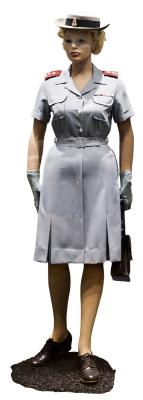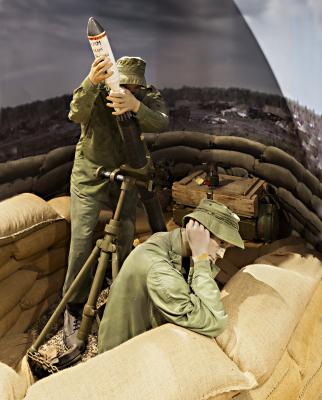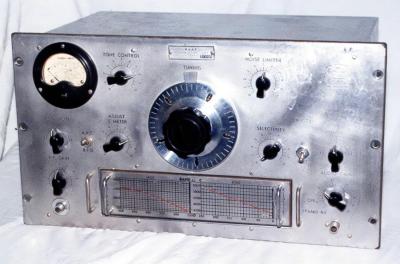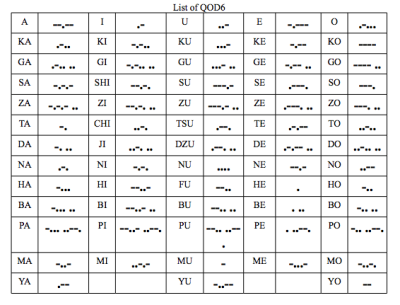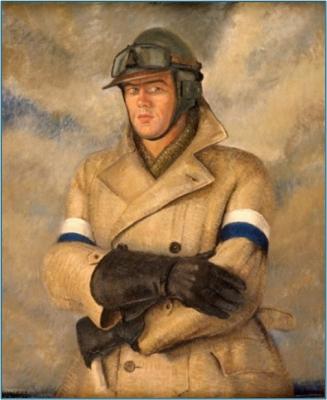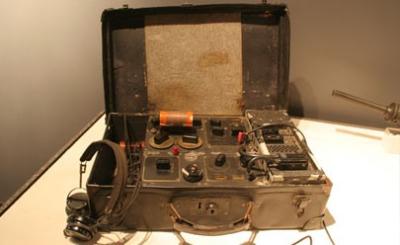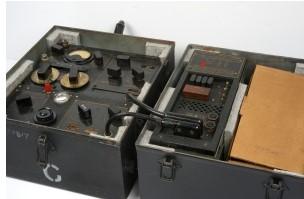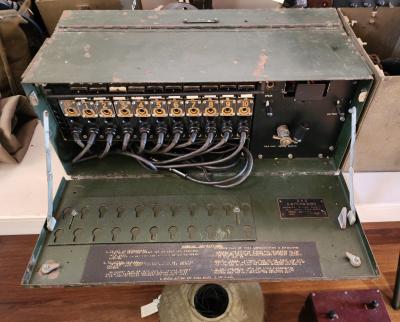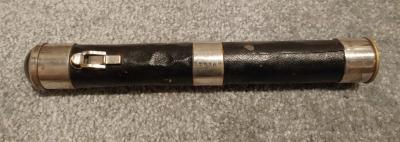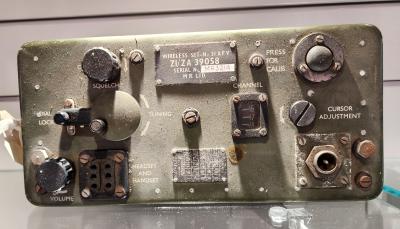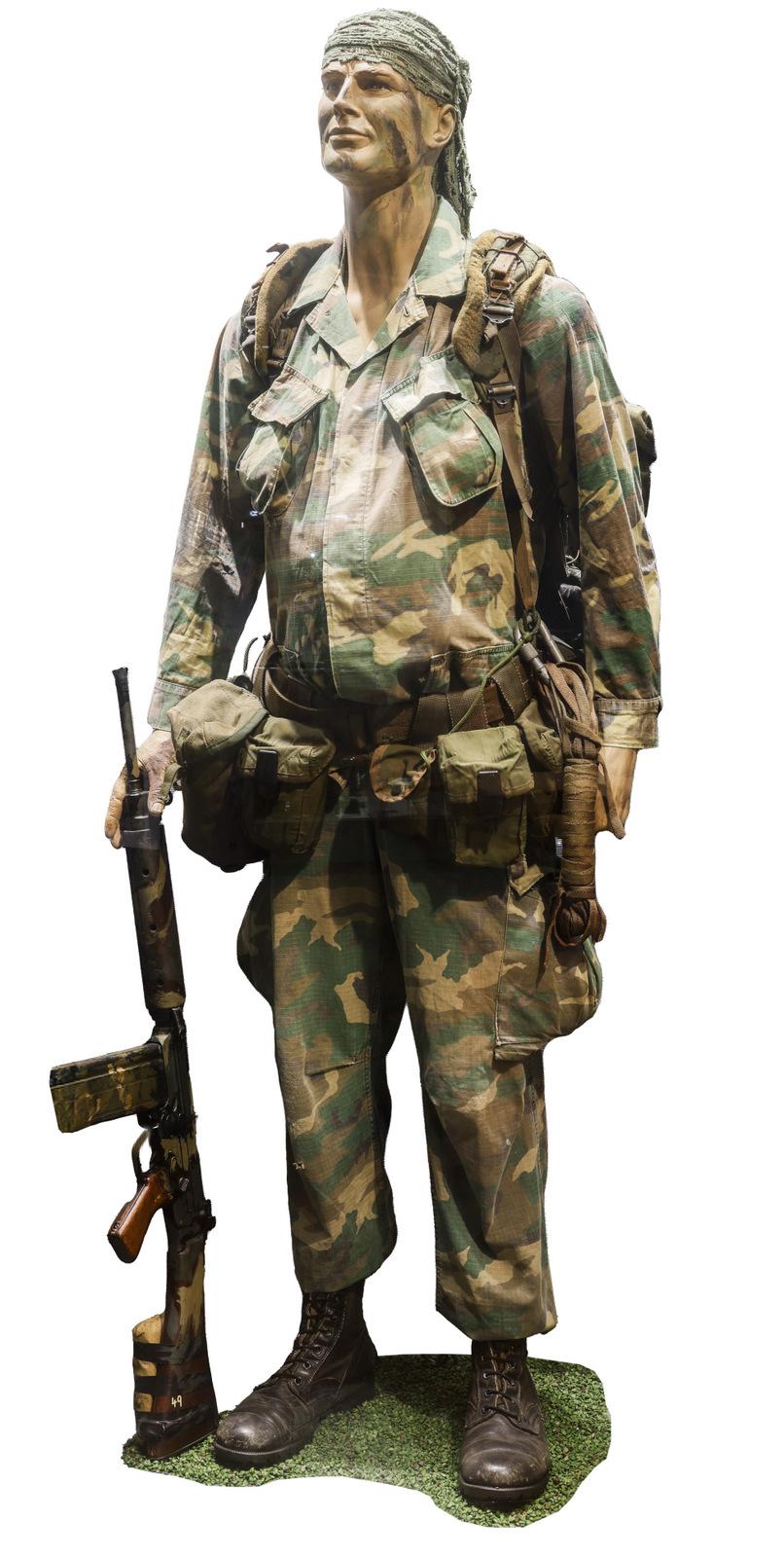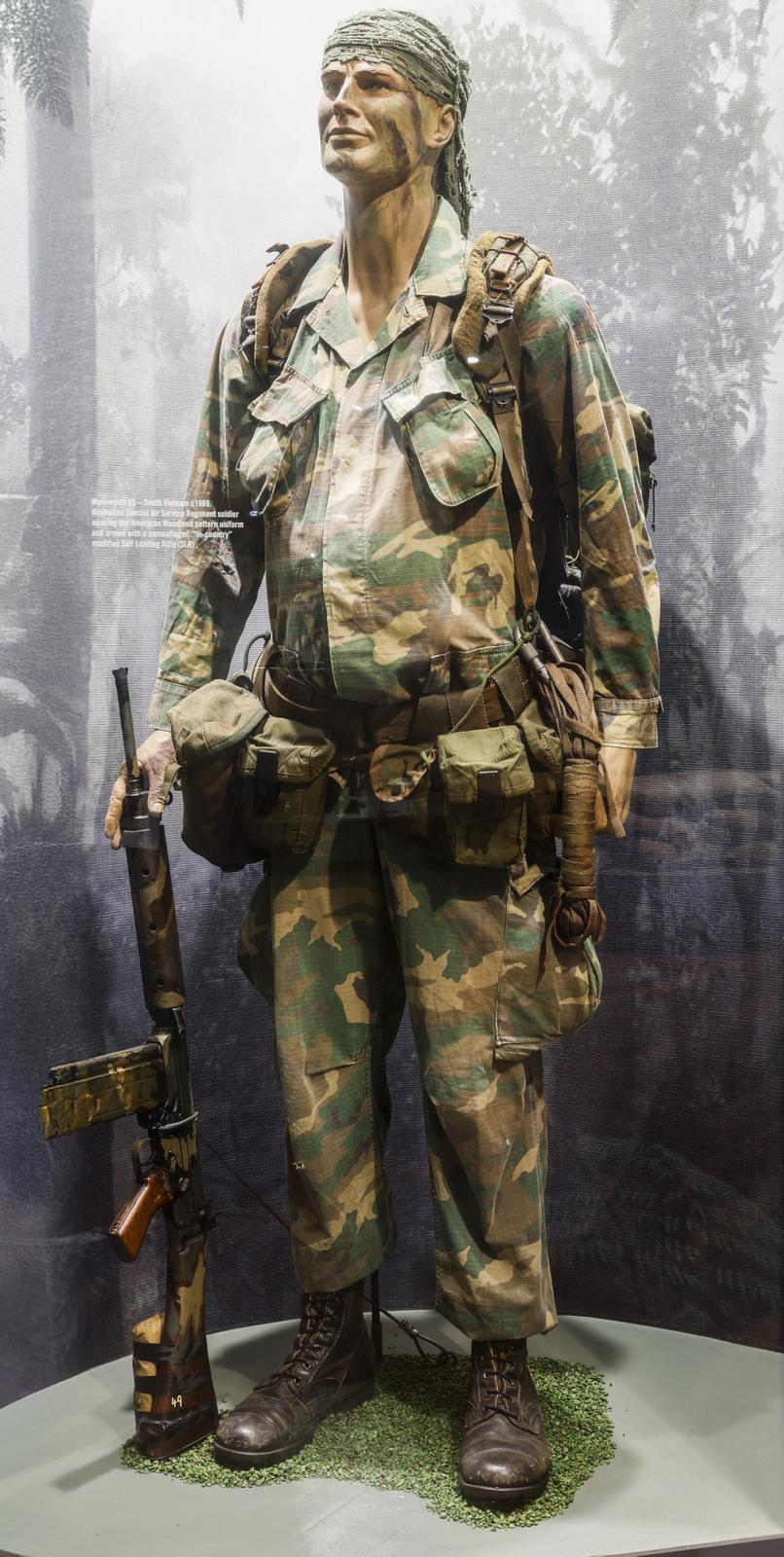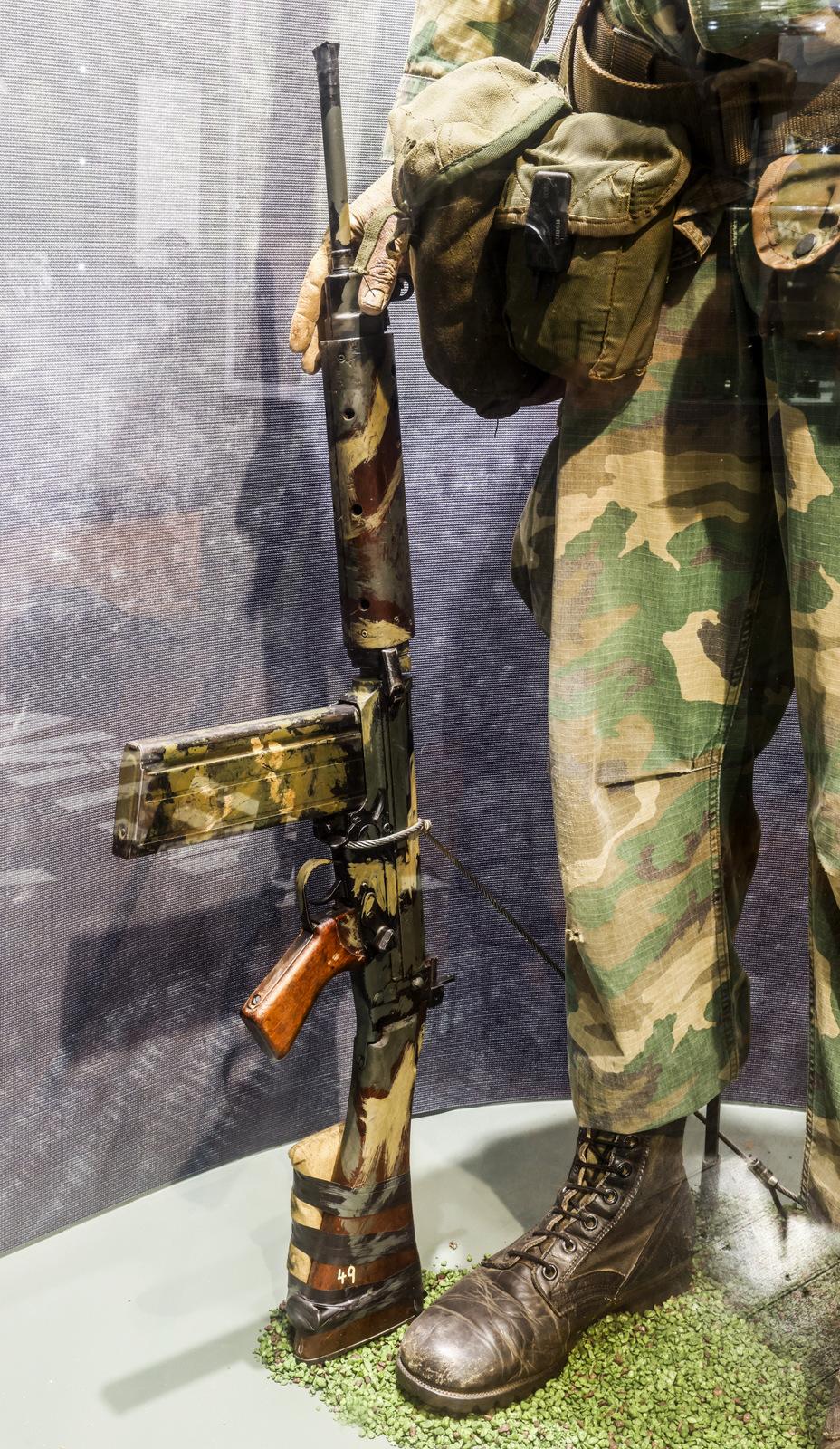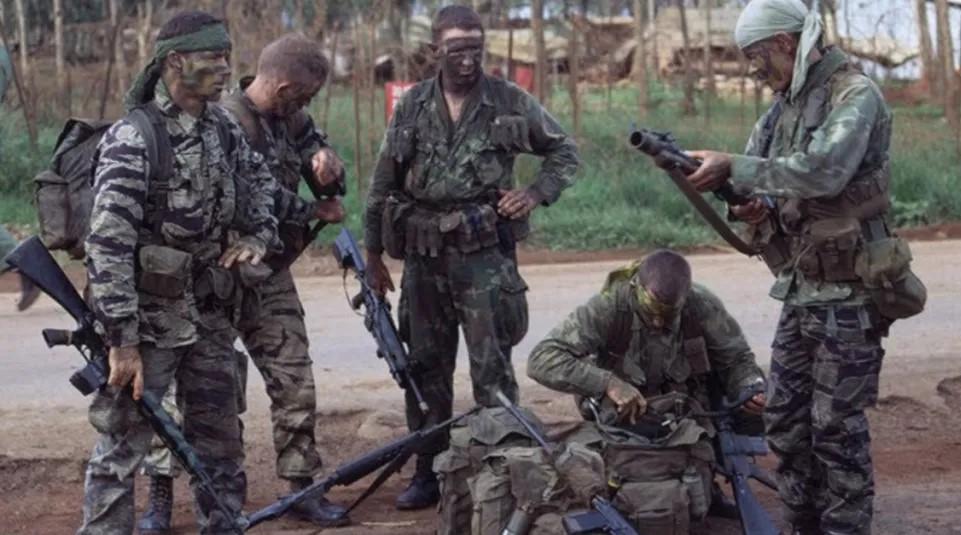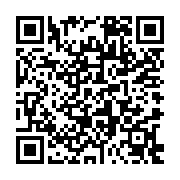Mannequin Display, Post 1945, South East Asia, Vietnam, Special Air Service Regiment, 1965
Mannequin depicting equipment and form of wear of an SAS Regiment trooper in Vietnam, 1965. Details show rifle modifications and position of shell dressing. Water bladder was worn in front underneath the shirt.
3 SAS Squadron arrived in Vietnam in April 1966 and thereafter the three SAS sabre squadrons rotated yearly until the withdrawal of 2 SAS Squadron in October 1971. (4 SAS Squadron, raised in 1965, was disbanded to provide reinforcements for the other three squadrons soon afterwards. On 31 August 1966, approval was given for SAS Regiment’s new establishment of three sabre squadrons, a base squadron and a signals squadron.)
As with the ANZAC battalions, 1 and 2 SAS Squadrons had a New Zealand troop integrated with them in Vietnam. The traditional role of the SAS was long range reconnaissance patrols (LRRP), acting as the ears and eyes of the task force with deep penetration into the enemy’s sanctuaries to collect such battle intelligence as enemy unit identifications, strengths and capabilities, movements and intentions. Sometimes “snatch” patrols were mounted with the intention of capturing a prisoner for interrogation.
Operating in four and five man patrols, the intention was to see without being seen but they frequently clashed with the enemy and had to fight their way out. Many of their extractions were “hard”, carried out under fire. Soon they were being used for offensive purposes, setting ambushes and harassing the enemy in his base areas.
Based on top of the Nui Dat feature which became known as “SAS Hill”, the SAS Squadrons built up a formidable reputation, both in providing accurate information and accumulating an impressive list of kills. SAS personnel also served with distinction with AATTV throughout the period it served in Vietnam, the most notable perhaps being Warrant Officer Ray Simpson VC, DCM. The majority of SAS with A1TV worked within the US 5th Special Forces sphere with Mobile Strike Forces or with Provincial Reconnaissance Units (PRU). With the reversion of AATTV to the training role, SAS personnel instructed with the LRRP wing at the JWTC in Phuoc Tuy Province.
During the period of just over five years, some 580 SAS Soldiers served in Vietnam. They conducted 1175 patrols (not including 130 by the NZ SAS) the majority being reconnaissance, recce-ambush and ambush patrols. Their service in Vietnam reinforced their reputation as an elite unit of the Australian Army.
Details
Details
This exhibit is in the Post 1945 Gallery at the Australian Army Museum of Western Australia
Australian Army Museum of Western Australia
Australian Army Museum of Western Australia
Other items from Australian Army Museum of Western Australia
- Mannequin Display, Post 1945, Australia, Army Nurse, 1968
- Diorama display, Post 1945, South East Asia, Vietnam, 81mm Mortar Detachment
- World War 2, Western Australia, Kingsley AR 7 Radio Receiver
- World War 2, South West Pacific Theatre, Wabun Morse Code, 1942
- World War 2, North Africa, Libya, Italian Souvenirs, 1941
- World War 2 Motorcycle Despatch Rider
- World War 2, B2 Suitcase Radio, Special Operations Executive, 1942
- World War 2, Container (robust) version of B2 SOE Radio, 1945
- World War 2, Switchboard Magneto 10 Line
- World War 1, British Style, Signalling Flashlight, 1915
- Post 1945, Wireless Set No 31, Mk 1, 1950
- Carved Badge - Royal Australian Corps of Signals
